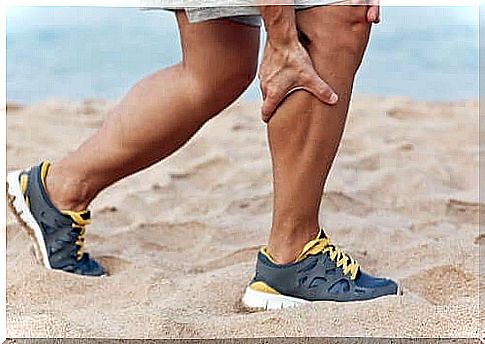The Compartment Syndrome: Symptoms And Causes

Compartment syndrome is a muscle and nerve disorder often linked to sports activity. It causes pain, tension, and sometimes an inability to move the leg or arm.
It can affect anyone, but it is more common in young people and sportsmen who perform intense and repetitive activities.
The lower leg and forearm are most affected. It can also affect the hand, foot, thigh, or upper arm.
Chronic sports activity compartment syndrome usually responds well to nonsurgical therapy and different physical activity.
Symptoms

Symptoms include:
- Pain, burning, or cramping in a specific area of the limb, usually the lower leg.
- Voltage.
- Swelling or tingling.
- Weakness of the affected limb.
Pain usually follows this pattern:
- Start on time during physical activity.
- It gets progressively worse.
- After the activity, it becomes less intense or disappears completely within 15 minutes.
Stopping sports or doing only low-intensity exercise relieves symptoms, although this is usually only a temporary improvement. With resumption of physical activity, the symptoms reappear.
Causes
Muscle groups are separated by thick layers of tissue called fasciae. Each band determines a space which is called a compartment. This includes muscle, nerve and blood vessel tissues. The fascia surrounds the whole of these structures and does not expand.
Inflammation of the compartment causes an increase in pressure which crushes the muscles, blood vessels and nerves.
If the blood pressure is high, blood flow to the compartment is reduced and eventually causes permanent damage to muscles and nerves. When the lack of oxygen is prolonged for a long period, the muscle can undergo necrosis with loss of the leg or arm.
Causes of acute compartment syndrome
Acute compartment syndrome can be caused by:
- Injury following trauma or surgery.
- Bone fracture.
- Cast or bandages that are too tight.
- Reduction in blood supply.
Causes of chronic compartment syndrome

Chronic compartment syndrome can be caused by repetitive physical activities such as jogging. The pressure inside the compartment only increases during physical activity and decreases when finished.
This condition is usually less disabling and does not lead to loss of function or limb. Pain, however, can hinder activity and reduce stamina.
The cause of the chronic syndrome is not entirely clear. Some studies suggest that the way movement is performed is at the root of this disorder.
Another reason could be excessive muscle extension during exercise. Or a particular stiffness of the fascia surrounding the compartment or a high pressure in the blood vessels.
Risk factors
Certain factors increase the risk of developing this syndrome, including:
- Age. Although chronic sports compartment syndrome can strike at any age, it is more common in athletes under the age of 30, regardless of gender.
- Type of exercise. High impact repetitive activity is a major risk factor.
- Excessive training (sporting activity that is too intense or frequent).
Chronic compartment syndrome is not usually a serious disease. Furthermore, if treated correctly it does not produce permanent damage.
However, pain, weakness, and tingling may require you to stop exercising or otherwise reduce your intensity level.









